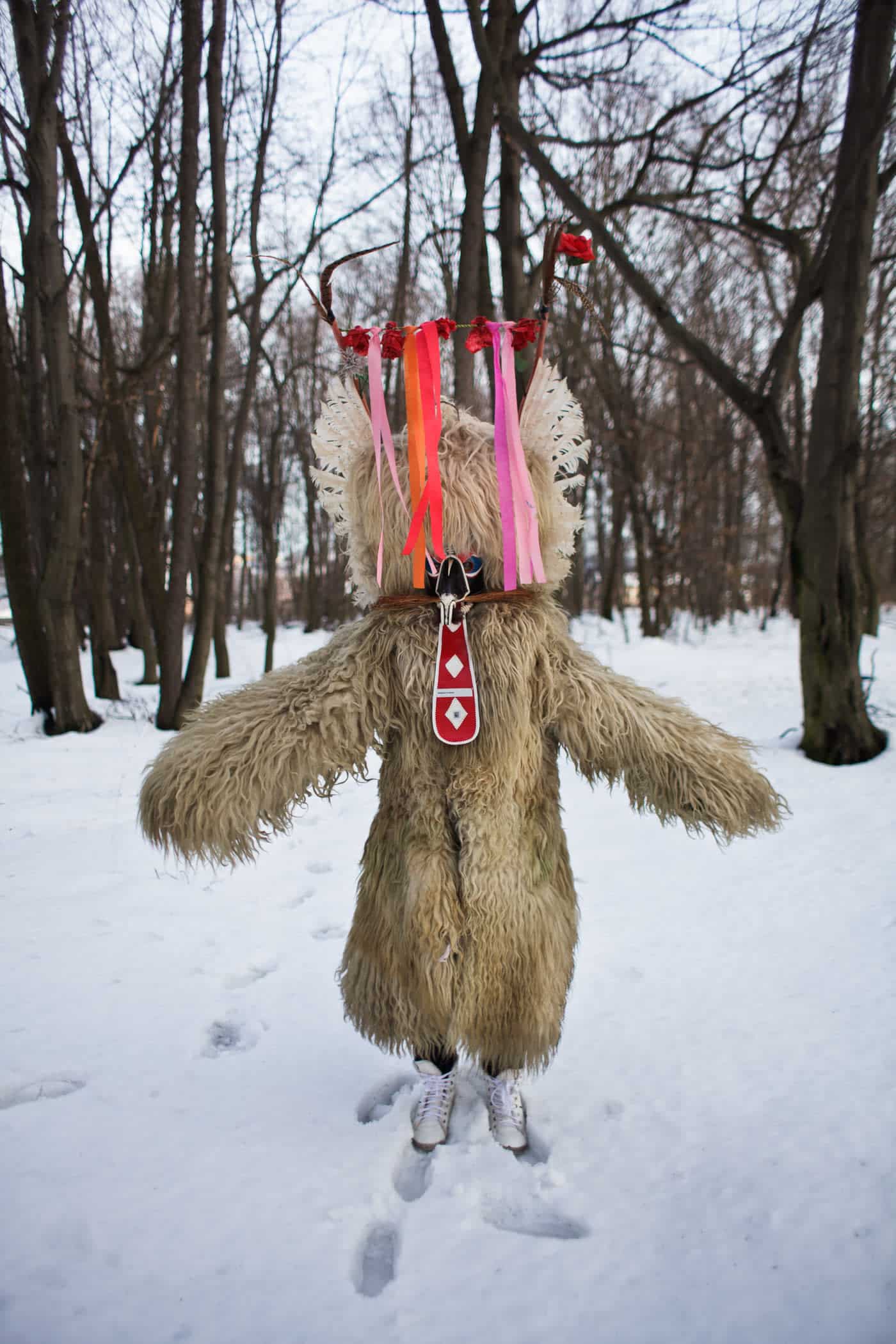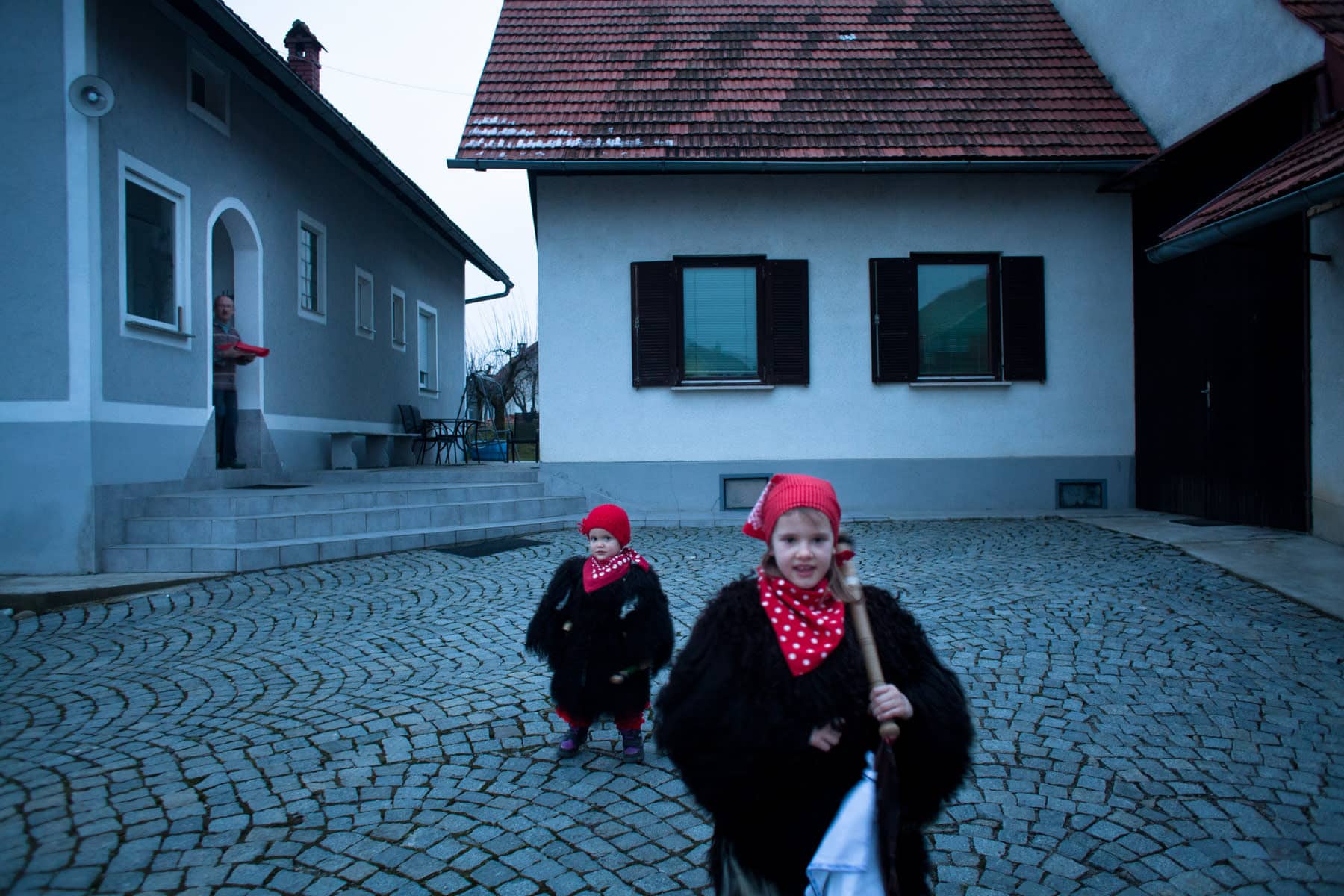When you live somewhere where the winter is bitterly cold, spring can often seem like an impossibly distant horizon. Photographer Nashalina Schrape visited Slovenia to document the colorful costumes of Kurentovanje, an ancient carnival that celebrates the coming of spring. Based on Pagan traditions, Kurentovanje still remains a much-needed reminder that winter won’t last forever.
Located in northeastern Slovenia, the town of Ptuj has been inhabited since the Stone Age. It is the oldest recorded town in the country, and it’s also the center of Kurentovanje. During the ten-day festival, which begins on Shrove Sunday, Kurents travel through town dressed in sheep skins, bells, and colorful ribbons. The noise of the parade is a means of frightening away winter; a symbolic farewell to cold weather.
Schrape, a Berlin-based photographer, had initially visited Slovenia to photograph some costumes. “I was invited back for Kurentovanje by one of the families who had been making the Kurent costume for generations,” she explains. “During the year, Marco Klinc and his family make custom furniture. But once a year, for about four weeks, they work overtime to make new costumes and repair older ones. His workshop was in many ways a Grand Central for the carnival, as they had many visitors and he knew many many people.”
Celebrations like Kurentovanje used to be more common across the northern hemisphere, especially in the pre-Christian era. “The pagan calendar only had two seasons, and many villages all over Europe celebrated the end of winter,” says Schrape. “Kurents are intended to be scary in order to frighten the winter away and prepare for a new season of renewal and the death of the old. The carnival welcomed fertility, newness and a strong harvest. Kurents and the other costumes would go from home to home, bringing blessings, entertainment, and a sense of community in return for homemade wine, other spirits, and sausage from the newly slaughtered pig.”
Despite its long history, the formally organized Kurentovanje festival only dates back to the 1950s. At that time, concerned over the disappearance of traditional customs in the region, Ptuj cultural historian Drago Hasl spearheaded an effort to establish Kurentovanje as the organized event it is today. Although the costumes of Kurentovanje remain traditionally inspired, the rules around them have evolved. Traditionally, only unmarried men were intended to wear the Kurent costume, but now anyone can be a Kurent.
See more of Nashalina Schrape’s photography at her website, built using Format.



























